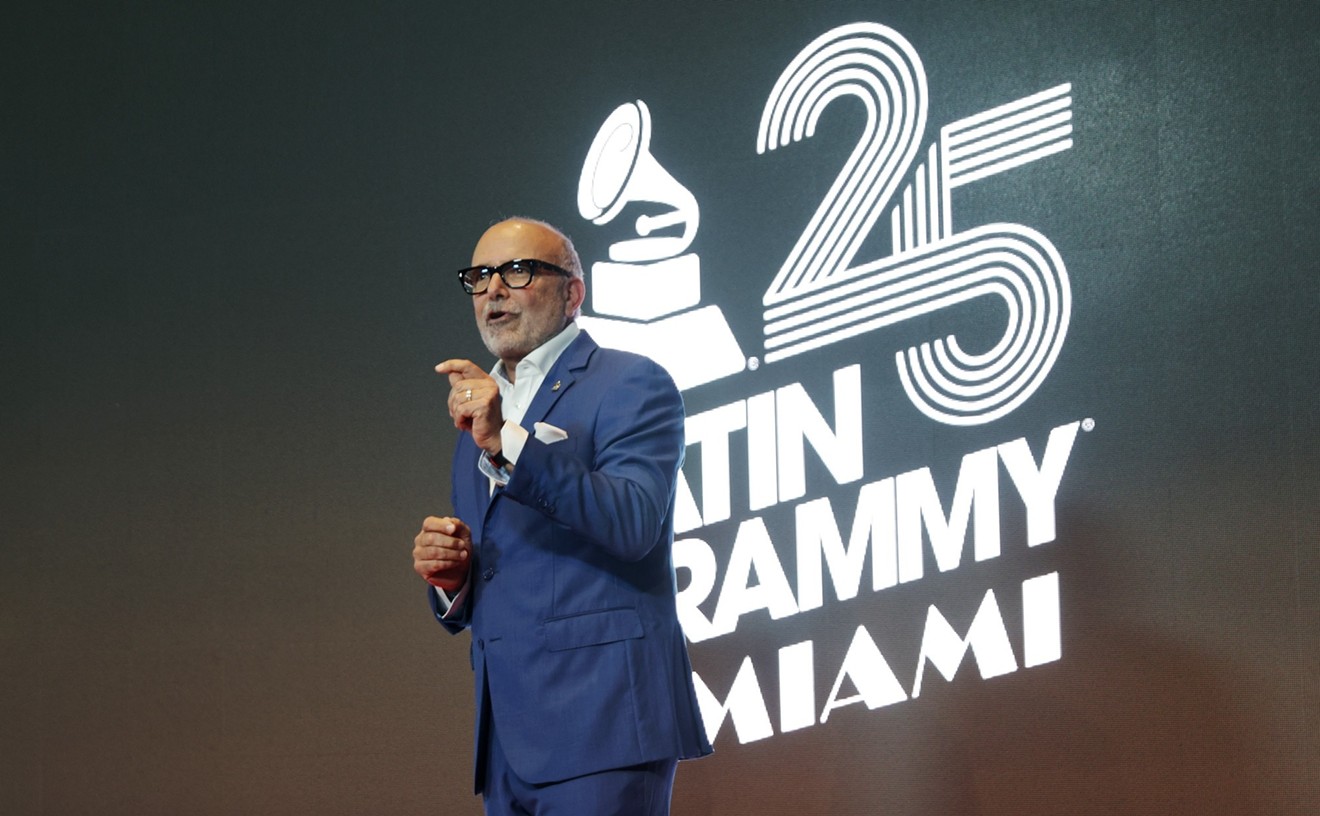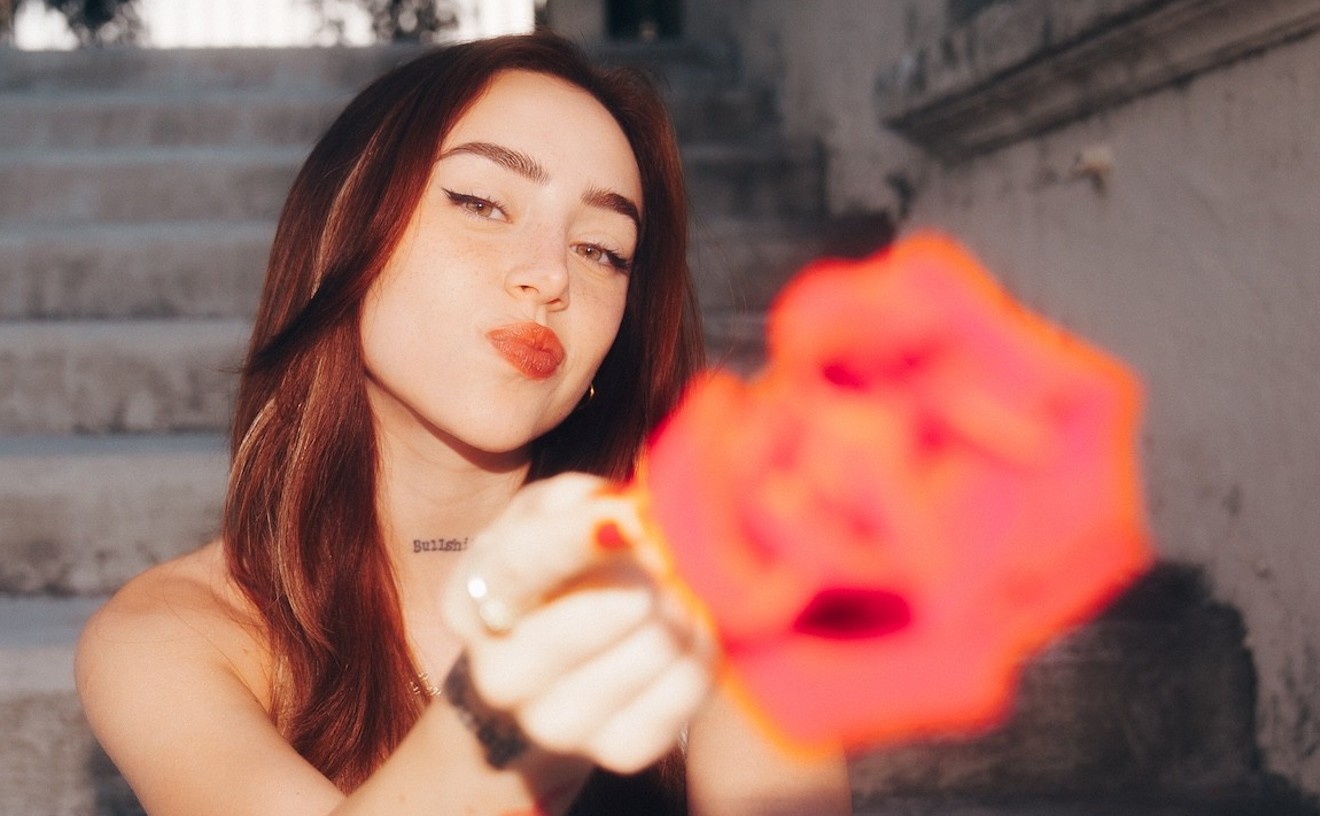When you make a biographical film about a public figure who's well-known to much of the audience, you start out in a deep hole. From the moment the guy appears onscreen, people are making mental notes about the actor's way of holding a fork or pronouncing tomato instead of getting into the plot. Give the makers of El Cantante credit on that score. Marc Anthony, with the slender physique and a pair of retro aviator-style specs, is a passable Héctor Lavoe. He has even picked up some of Lavoe's vocal mannerisms — like Lavoe's distinctive way of turning a long, line-ending note into a stretched-out triplet — and his supplicating, arm-waving stage posture.
But there are already rumblings in the Spanish media about the presumptuousness of using a tissue-paper balladeer like Anthony to portray one of the great salsa interpreters (to say nothing of the dreary tediousness of watching the protagonist's 30-year act of self-destruction — and wasn't there more to Lavoe's life than that?). For Lavoe aficionados, seeing Anthony up there tends to evoke that Dan Quayle moment: Sir, I knew Héctor Lavoe — and you're no Héctor Lavoe.
If you want to understand why Lavoe was considered a sonero supremo, get the El Cantante soundtrack. Listen to Anthony's renditions of any of Lavoe's signature songs, say "Mi Gente" or the title song, then listen to the originals, either the studio recordings or various live sets that Lavoe recorded before he died in 1993. The difference is a singer with a complete mastery of his material versus one who's trying doggedly to pull off a reasonable simulation.
I'm not going to play a party-pooping Lloyd Bentsen to the makers of El Cantante — if anything, you want to give Anthony a reassuring hug, because his performance is a respectful one — but, yes, I remember Lavoe from those days, and his music, unlike the film's tracks, could make the hair on the back of your neck stand up.
Those were exuberant times, the 1970s and '80s on the salsa circuit. The famous Palladium in New York City had closed in 1966, more for security reasons than for any kind of cultural shift (the place had become a mecca for kids in rayon shirts, riding the IRT down from the Bronx and El Barrio, packin' heat). But the party went on at the Corso on East 86th Street, Ochentas on the Upper West Side, the Tropicoro in the Bronx, and a dozen or so other joints, to say nothing of the merengue clubs in Washington Heights and after-hours clubs in all of the Latino barrios. (Anybody remember the brief reign of Smucker's on Flatbush Avenue?)
In truth, Lavoe, a skinny dude with something of a ditty-bopper slouch, was never my favorite. Compared to some of the other great voices — Cheo Feliciano, Rubén Blades, and Ismael Miranda, to say nothing of the incomparable Tito Rodriguez — he sounded nasal, even creaky, like somebody's hick grandfather. But coño, hombre, he took command of a stage. Salsa requires precision as much as emotion, a hard-wired feel for the rhythm, and an infallible instinct for the clave beat. The guys on the stage are all percussionists, even the wind instrumentalists. And from the perspective of the dance floor, Lavoe was one of the magicians who could make it all work.
A distinctive part of Lavoe, I think, was that he never really crossed over from Puerto Rico to the United States; he always nurtured that jíbaro connection. When he performed, there was directness to him, the attitude of a man saying: "Let me explain myself. I'm often misunderstood, but I'm a person of dignity and joy." His Spanish-speaking audience loved him for it, always perceiving him as a great man of the people rather than as a romantic heartthrob.
The drugs? The movie doesn't say it, but habits must have been sustained by the grueling routine of the so-called cuchifrito circuit. Playing two or three nightclub gigs a night (bars could serve liquor until 4 a.m.), then grinding away till dawn at an after-hours club took a lot of strength. Lavoe didn't have the iron determination of some of the younger bandleaders. I remember one night in 1981 or 1982, standing with his musicians, one or two of them world-class percussionists who put in time with the Fania All-Stars, in front of a Bronx nightclub. Everybody was fidgeting restlessly, waiting for Héctor. It was the band's third stop that night. No Héctor Lavoe, no gig, no fee from the club. Héctor never showed. There were a lot of pissed-off musicians and customers. That might have been the beginning of the end for Héctor Lavoe.










